Photo
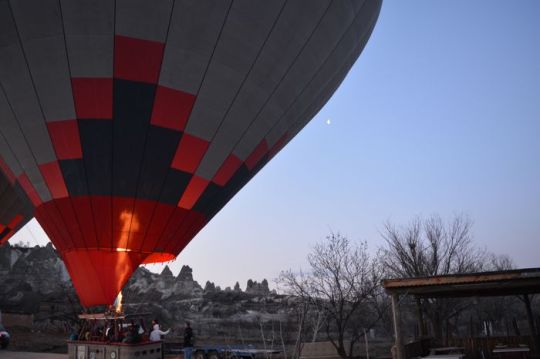
Exploring Thracian Heritage
The Valley of the Thracian Kings in Bulgaria, particularly in Kazanlak, boasts a rich Thracian heritage. Explore the ancient tombs surrounding the town, unraveling the mysteries of the Thracian civilization. Despite the ancient capital being submerged under Koprinka Lake, artifacts displayed at Iskra Museum offer a glimpse into its magnificence.
Historic Landmarks
Kazanlak is a land of beauty and mystery, adorned with historic sites like the UNESCO-listed Kazanlak Thracian Tomb and the Golyama Kosmatka, Ostrusha, and Svetitsa Mounds. Delve into the enigmatic world of the ancient Thracians by marveling at priceless artifacts such as the bronze head of Seuthes III and ancient frescoes. Museums and galleries provide deeper insights into the town’s past and Bulgarian traditions.
Rose Festival
Experience the allure of the Valley of Roses, where Rosa Damascena reigns supreme. Don’t miss the brief but enchanting period in late May to early June when the roses bloom, celebrated with gusto at the Rose Festival. Join the festivities, including the crowning of the Rose Queen, rose-picking rituals, and vibrant parades, immersing yourself in the region’s rose-growing traditions Istanbul Cultural Tours.
Natural Wonders
The Valley offers unforgettable experiences amidst its abundant natural beauty. From the balmy lowland climate to majestic mountains, verdant forests, and pristine lakes, the senses are rejuvenated. Embark on scenic hikes to Buzludzha Peak for panoramic views or explore charming villages on a biking tour, promising a delightful and rejuvenating vacation experience.
0 notes
Photo
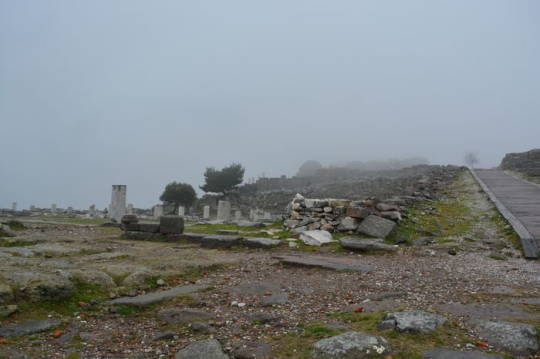
Savage Acts of Barbarity
The barbarity witnessed in Panagurishti reached unfathomable depths, exacerbated by the presence of anguished relatives forced to bear witness to the atrocities inflicted upon their loved ones. These acts of brutality were not isolated incidents but occurred repeatedly, leaving a trail of devastation and despair in their wake. Countless tales of horror emerged, revealing the indiscriminate slaughter of men, women, young girls, children, and even infants.
Heartlessness Beyond Measure
The perpetrators, devoid of pity or compassion, displayed a level of cruelty surpassing even that of wild beasts. Unlike the tiger, which refrains from slaying its own young, these Turkish assailants demonstrated a chilling disregard for innocent life. Infants were callously snatched from their cradles and tossed about with bayonets, while others were impaled upon the barrels of guns, their blood staining the hands of their tormentors. Heads of children were severed, and their still-bleeding remains callously paraded through the streets by other children Bulgaria Tours.
Eyewitness Testimony of Unimaginable Horror
These chilling accounts, recounted by eyewitnesses and meticulously recorded by Mr. Schuyler, bear testament to the unimaginable horrors witnessed in Panagurishti. The tears, anguish, and despair of those who lived through these nightmarish events underscore the gravity of the atrocities committed. Hundreds of women came forward to share their harrowing experiences, each one a testament to the widespread nature of the outrages inflicted upon the populace.
The Painful Truth Revealed
The testimonies of these women laid bare the painful truth of their suffering, with not a single woman in the village escaping the horrors of outrage. While in other places, reluctance to speak out may have been observed, in Panagurishti, the women did not hesitate to recount their ordeals. Even at Avrat-Alan, where a sense of reluctance initially prevailed, a delegation of ladies eventually mustered the courage to convey their grievances to Mr. Schuyler, leaving behind a poignant letter detailing the widespread nature of the outrages.
The Depths of Human Cruelty
The atrocities witnessed in Panagurishti stand as a testament to the depths of human cruelty unleashed during times of conflict. The harrowing testimonies of survivors serve as a stark reminder of the urgent need for justice and accountability to prevent such atrocities from recurring in the future.
0 notes
Photo

A Cry for Help Tales of Misery and Despair
Diplomatic Delays
Our encounter with the destitute villagers left us reeling with a profound sense of helplessness. The sheer magnitude of their suffering was overwhelming, and though we offered assurances of assistance upon our return to Constantinople, we knew all too well the sluggish pace of diplomatic intervention. While ambassadors exchanged pleasantries and penned futile missives to the Porte, these impoverished souls languished in agony, their cries for help falling on deaf ears.
Seizing an Opportunity
Faced with the agonizing reality of their plight, many villagers saw our journey to Batak as a glimmer of hope amidst the darkness of their despair. Determined to bear witness to the ruins of their homes, they resolved to accompany us on our quest for justice. Others, desperate for acknowledgment of their suffering, clung to our reins, compelling us to listen to their harrowing tales before our departure Private Guide Turkey.
Echoes of Suffering
One woman, her arm bearing the scars of a bullet’s cruel passage, implored me to witness the devastation wrought upon her life. Her husband slain, her livelihood shattered, she stood as a testament to the indomitable spirit of those ravaged by tragedy. As she recounted her ordeal in a tongue reminiscent of Russian, I felt a kinship with her pain, recognizing in her anguish the shared burden of human suffering.
A Shared Resilience
The bonds of solidarity that unite the Slavic peoples are unmistakable, transcending linguistic and cultural barriers. From the familiar twinkle in their eyes to the subtle nuances of expression, there exists a profound sense of kinship among these disparate yet kindred souls. Just as brothers and sisters bear the mark of their shared lineage, so too do the Slavic peoples share in each other’s struggles, bound by a common desire for freedom and justice.
Unyielding Unity
In the face of foreign oppression, the solidarity of the Slavic races remains unshakeable. Like siblings rallying to each other’s aid, they stand united against tyranny, their voices blending in a chorus of defiance against the forces of despotism. Just as the English north and south of the Thames share in a common heritage, so too do the Slavic peoples stand as one in their quest for liberation.
0 notes
Photo
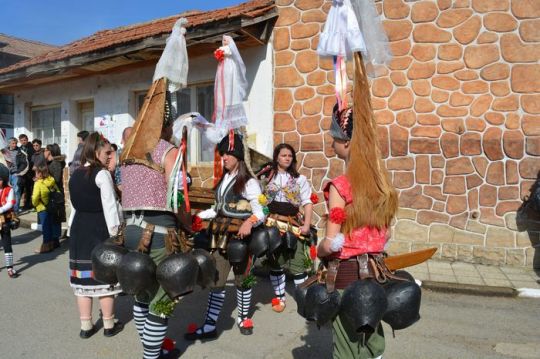
A Cry for Help Tales of Misery and Despair
Diplomatic Delays
Our encounter with the destitute villagers left us reeling with a profound sense of helplessness. The sheer magnitude of their suffering was overwhelming, and though we offered assurances of assistance upon our return to Constantinople, we knew all too well the sluggish pace of diplomatic intervention. While ambassadors exchanged pleasantries and penned futile missives to the Porte, these impoverished souls languished in agony, their cries for help falling on deaf ears.
Seizing an Opportunity
Faced with the agonizing reality of their plight, many villagers saw our journey to Batak as a glimmer of hope amidst the darkness of their despair. Determined to bear witness to the ruins of their homes, they resolved to accompany us on our quest for justice. Others, desperate for acknowledgment of their suffering, clung to our reins, compelling us to listen to their harrowing tales before our departure Private Guide Turkey.
Echoes of Suffering
One woman, her arm bearing the scars of a bullet’s cruel passage, implored me to witness the devastation wrought upon her life. Her husband slain, her livelihood shattered, she stood as a testament to the indomitable spirit of those ravaged by tragedy. As she recounted her ordeal in a tongue reminiscent of Russian, I felt a kinship with her pain, recognizing in her anguish the shared burden of human suffering.
A Shared Resilience
The bonds of solidarity that unite the Slavic peoples are unmistakable, transcending linguistic and cultural barriers. From the familiar twinkle in their eyes to the subtle nuances of expression, there exists a profound sense of kinship among these disparate yet kindred souls. Just as brothers and sisters bear the mark of their shared lineage, so too do the Slavic peoples share in each other’s struggles, bound by a common desire for freedom and justice.
Unyielding Unity
In the face of foreign oppression, the solidarity of the Slavic races remains unshakeable. Like siblings rallying to each other’s aid, they stand united against tyranny, their voices blending in a chorus of defiance against the forces of despotism. Just as the English north and south of the Thames share in a common heritage, so too do the Slavic peoples stand as one in their quest for liberation.
0 notes
Photo
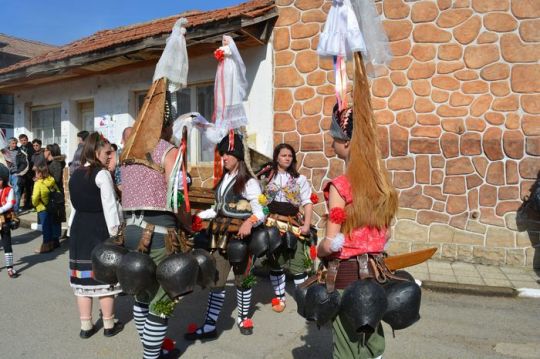
A Cry for Help Tales of Misery and Despair
Diplomatic Delays
Our encounter with the destitute villagers left us reeling with a profound sense of helplessness. The sheer magnitude of their suffering was overwhelming, and though we offered assurances of assistance upon our return to Constantinople, we knew all too well the sluggish pace of diplomatic intervention. While ambassadors exchanged pleasantries and penned futile missives to the Porte, these impoverished souls languished in agony, their cries for help falling on deaf ears.
Seizing an Opportunity
Faced with the agonizing reality of their plight, many villagers saw our journey to Batak as a glimmer of hope amidst the darkness of their despair. Determined to bear witness to the ruins of their homes, they resolved to accompany us on our quest for justice. Others, desperate for acknowledgment of their suffering, clung to our reins, compelling us to listen to their harrowing tales before our departure Private Guide Turkey.
Echoes of Suffering
One woman, her arm bearing the scars of a bullet’s cruel passage, implored me to witness the devastation wrought upon her life. Her husband slain, her livelihood shattered, she stood as a testament to the indomitable spirit of those ravaged by tragedy. As she recounted her ordeal in a tongue reminiscent of Russian, I felt a kinship with her pain, recognizing in her anguish the shared burden of human suffering.
A Shared Resilience
The bonds of solidarity that unite the Slavic peoples are unmistakable, transcending linguistic and cultural barriers. From the familiar twinkle in their eyes to the subtle nuances of expression, there exists a profound sense of kinship among these disparate yet kindred souls. Just as brothers and sisters bear the mark of their shared lineage, so too do the Slavic peoples share in each other’s struggles, bound by a common desire for freedom and justice.
Unyielding Unity
In the face of foreign oppression, the solidarity of the Slavic races remains unshakeable. Like siblings rallying to each other’s aid, they stand united against tyranny, their voices blending in a chorus of defiance against the forces of despotism. Just as the English north and south of the Thames share in a common heritage, so too do the Slavic peoples stand as one in their quest for liberation.
0 notes
Photo
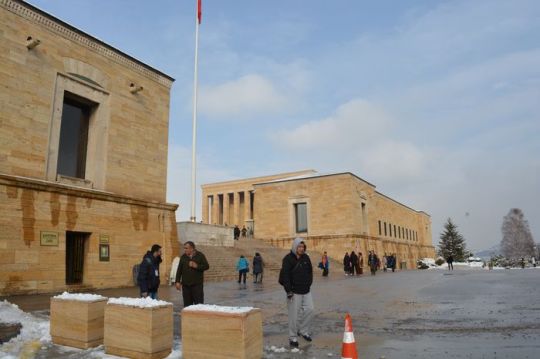
Bulgarian Arts
Through Centuries and Communist Rule
Ancient Treasures
The oldest Bulgarian art traces back to 12th-century mural paintings in Bachkovo Monastery. Between the 12th and 14th centuries, small cross-shaped churches with domes emerged. While Byzantine and Oriental influences shaped early art, western European influence gained prominence, especially in the painting center of Tirnovo. Contemporary artists like Anton Mitov, Ivan Angelov, Andrei Nikolov, and Ivan Lazarov continue the rich artistic tradition.
The Stage and Melodies
The National Opera (1890) and National Theater (1907) contributed to Bulgaria’s theatrical and musical heritage. Renowned singers such as Luba Velich, Boris Christov, and Elena Nikolai achieved global acclaim. Notable composers like A. Bukureshtliev, Dobri Christov, Pancho Vladigerov, and Petko Stainov enriched the musical landscape Private Istanbul Tour.
Cultural Landscape Under Communism
Communist influence since 1947 significantly impacted Bulgarian literature and art. The Communist Party’s control extended to all cultural and educational entities, enforcing adherence to party dictates. Literary classics contrary to Communist policies were banned, and censorship stifled creativity.
Resistance emerged, notably from non-Communist writer Trifon Kunev, who faced imprisonment and death in 1954. Communist Party member and painter Alexander Zhendov protested censorship in 1950, leading to his tragic suicide in 1951. Further dissent unfolded after the Soviet Communist Party’s 20th Congress in 1957, challenging the “cult of personality.” Playwright Todor Guenov’s “Fear” stood out, joined by other dissenting voices like Pavel Vezhinov, Orlin Vasilev, Emil Manov, Liudmil Stoyanov, and critic Boris Delchev.
Despite resistance, Bulgarian culture under Communist rule became a satellite of Soviet ideology, losing its originality. Subject to Party dogma, it served Soviet imperialistic and ideological goals, leaving an indelible mark on the nation’s cultural identity.
0 notes
Photo
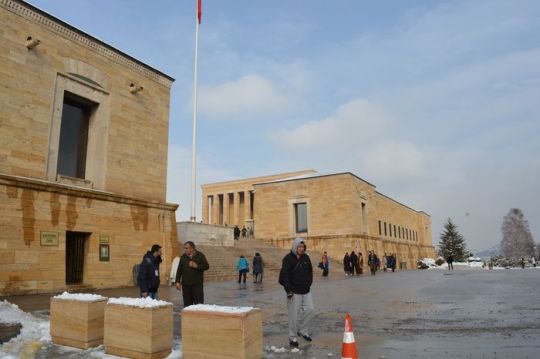
Bulgarian Arts
Through Centuries and Communist Rule
Ancient Treasures
The oldest Bulgarian art traces back to 12th-century mural paintings in Bachkovo Monastery. Between the 12th and 14th centuries, small cross-shaped churches with domes emerged. While Byzantine and Oriental influences shaped early art, western European influence gained prominence, especially in the painting center of Tirnovo. Contemporary artists like Anton Mitov, Ivan Angelov, Andrei Nikolov, and Ivan Lazarov continue the rich artistic tradition.
The Stage and Melodies
The National Opera (1890) and National Theater (1907) contributed to Bulgaria’s theatrical and musical heritage. Renowned singers such as Luba Velich, Boris Christov, and Elena Nikolai achieved global acclaim. Notable composers like A. Bukureshtliev, Dobri Christov, Pancho Vladigerov, and Petko Stainov enriched the musical landscape Private Istanbul Tour.
Cultural Landscape Under Communism
Communist influence since 1947 significantly impacted Bulgarian literature and art. The Communist Party’s control extended to all cultural and educational entities, enforcing adherence to party dictates. Literary classics contrary to Communist policies were banned, and censorship stifled creativity.
Resistance emerged, notably from non-Communist writer Trifon Kunev, who faced imprisonment and death in 1954. Communist Party member and painter Alexander Zhendov protested censorship in 1950, leading to his tragic suicide in 1951. Further dissent unfolded after the Soviet Communist Party’s 20th Congress in 1957, challenging the “cult of personality.” Playwright Todor Guenov’s “Fear” stood out, joined by other dissenting voices like Pavel Vezhinov, Orlin Vasilev, Emil Manov, Liudmil Stoyanov, and critic Boris Delchev.
Despite resistance, Bulgarian culture under Communist rule became a satellite of Soviet ideology, losing its originality. Subject to Party dogma, it served Soviet imperialistic and ideological goals, leaving an indelible mark on the nation’s cultural identity.
0 notes
Photo

Bulgarian Arts
Through Centuries and Communist Rule
Ancient Treasures
The oldest Bulgarian art traces back to 12th-century mural paintings in Bachkovo Monastery. Between the 12th and 14th centuries, small cross-shaped churches with domes emerged. While Byzantine and Oriental influences shaped early art, western European influence gained prominence, especially in the painting center of Tirnovo. Contemporary artists like Anton Mitov, Ivan Angelov, Andrei Nikolov, and Ivan Lazarov continue the rich artistic tradition.
The Stage and Melodies
The National Opera (1890) and National Theater (1907) contributed to Bulgaria’s theatrical and musical heritage. Renowned singers such as Luba Velich, Boris Christov, and Elena Nikolai achieved global acclaim. Notable composers like A. Bukureshtliev, Dobri Christov, Pancho Vladigerov, and Petko Stainov enriched the musical landscape Private Istanbul Tour.
Cultural Landscape Under Communism
Communist influence since 1947 significantly impacted Bulgarian literature and art. The Communist Party’s control extended to all cultural and educational entities, enforcing adherence to party dictates. Literary classics contrary to Communist policies were banned, and censorship stifled creativity.
Resistance emerged, notably from non-Communist writer Trifon Kunev, who faced imprisonment and death in 1954. Communist Party member and painter Alexander Zhendov protested censorship in 1950, leading to his tragic suicide in 1951. Further dissent unfolded after the Soviet Communist Party’s 20th Congress in 1957, challenging the “cult of personality.” Playwright Todor Guenov’s “Fear” stood out, joined by other dissenting voices like Pavel Vezhinov, Orlin Vasilev, Emil Manov, Liudmil Stoyanov, and critic Boris Delchev.
Despite resistance, Bulgarian culture under Communist rule became a satellite of Soviet ideology, losing its originality. Subject to Party dogma, it served Soviet imperialistic and ideological goals, leaving an indelible mark on the nation’s cultural identity.
0 notes
Photo
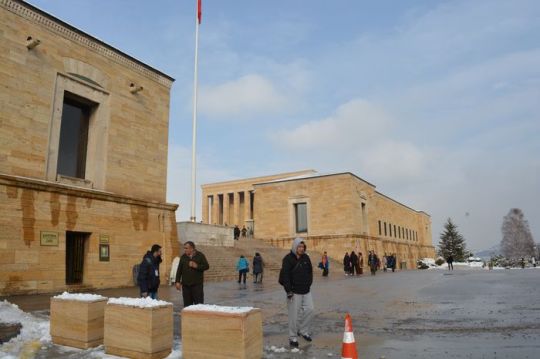
Bulgarian Arts
Through Centuries and Communist Rule
Ancient Treasures
The oldest Bulgarian art traces back to 12th-century mural paintings in Bachkovo Monastery. Between the 12th and 14th centuries, small cross-shaped churches with domes emerged. While Byzantine and Oriental influences shaped early art, western European influence gained prominence, especially in the painting center of Tirnovo. Contemporary artists like Anton Mitov, Ivan Angelov, Andrei Nikolov, and Ivan Lazarov continue the rich artistic tradition.
The Stage and Melodies
The National Opera (1890) and National Theater (1907) contributed to Bulgaria’s theatrical and musical heritage. Renowned singers such as Luba Velich, Boris Christov, and Elena Nikolai achieved global acclaim. Notable composers like A. Bukureshtliev, Dobri Christov, Pancho Vladigerov, and Petko Stainov enriched the musical landscape Private Istanbul Tour.
Cultural Landscape Under Communism
Communist influence since 1947 significantly impacted Bulgarian literature and art. The Communist Party’s control extended to all cultural and educational entities, enforcing adherence to party dictates. Literary classics contrary to Communist policies were banned, and censorship stifled creativity.
Resistance emerged, notably from non-Communist writer Trifon Kunev, who faced imprisonment and death in 1954. Communist Party member and painter Alexander Zhendov protested censorship in 1950, leading to his tragic suicide in 1951. Further dissent unfolded after the Soviet Communist Party’s 20th Congress in 1957, challenging the “cult of personality.” Playwright Todor Guenov’s “Fear” stood out, joined by other dissenting voices like Pavel Vezhinov, Orlin Vasilev, Emil Manov, Liudmil Stoyanov, and critic Boris Delchev.
Despite resistance, Bulgarian culture under Communist rule became a satellite of Soviet ideology, losing its originality. Subject to Party dogma, it served Soviet imperialistic and ideological goals, leaving an indelible mark on the nation’s cultural identity.
0 notes
Photo
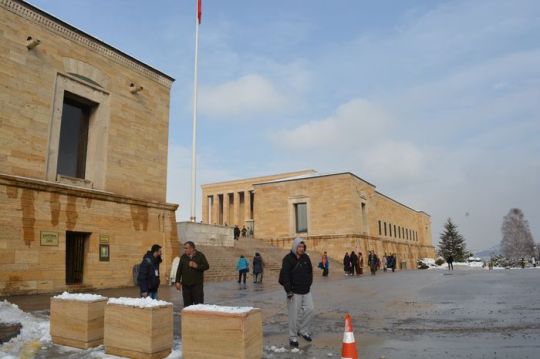
Bulgarian Arts
Through Centuries and Communist Rule
Ancient Treasures
The oldest Bulgarian art traces back to 12th-century mural paintings in Bachkovo Monastery. Between the 12th and 14th centuries, small cross-shaped churches with domes emerged. While Byzantine and Oriental influences shaped early art, western European influence gained prominence, especially in the painting center of Tirnovo. Contemporary artists like Anton Mitov, Ivan Angelov, Andrei Nikolov, and Ivan Lazarov continue the rich artistic tradition.
The Stage and Melodies
The National Opera (1890) and National Theater (1907) contributed to Bulgaria’s theatrical and musical heritage. Renowned singers such as Luba Velich, Boris Christov, and Elena Nikolai achieved global acclaim. Notable composers like A. Bukureshtliev, Dobri Christov, Pancho Vladigerov, and Petko Stainov enriched the musical landscape Private Istanbul Tour.
Cultural Landscape Under Communism
Communist influence since 1947 significantly impacted Bulgarian literature and art. The Communist Party’s control extended to all cultural and educational entities, enforcing adherence to party dictates. Literary classics contrary to Communist policies were banned, and censorship stifled creativity.
Resistance emerged, notably from non-Communist writer Trifon Kunev, who faced imprisonment and death in 1954. Communist Party member and painter Alexander Zhendov protested censorship in 1950, leading to his tragic suicide in 1951. Further dissent unfolded after the Soviet Communist Party’s 20th Congress in 1957, challenging the “cult of personality.” Playwright Todor Guenov’s “Fear” stood out, joined by other dissenting voices like Pavel Vezhinov, Orlin Vasilev, Emil Manov, Liudmil Stoyanov, and critic Boris Delchev.
Despite resistance, Bulgarian culture under Communist rule became a satellite of Soviet ideology, losing its originality. Subject to Party dogma, it served Soviet imperialistic and ideological goals, leaving an indelible mark on the nation’s cultural identity.
0 notes
Photo

Bulgarian Arts
Through Centuries and Communist Rule
Ancient Treasures
The oldest Bulgarian art traces back to 12th-century mural paintings in Bachkovo Monastery. Between the 12th and 14th centuries, small cross-shaped churches with domes emerged. While Byzantine and Oriental influences shaped early art, western European influence gained prominence, especially in the painting center of Tirnovo. Contemporary artists like Anton Mitov, Ivan Angelov, Andrei Nikolov, and Ivan Lazarov continue the rich artistic tradition.
The Stage and Melodies
The National Opera (1890) and National Theater (1907) contributed to Bulgaria’s theatrical and musical heritage. Renowned singers such as Luba Velich, Boris Christov, and Elena Nikolai achieved global acclaim. Notable composers like A. Bukureshtliev, Dobri Christov, Pancho Vladigerov, and Petko Stainov enriched the musical landscape Private Istanbul Tour.
Cultural Landscape Under Communism
Communist influence since 1947 significantly impacted Bulgarian literature and art. The Communist Party’s control extended to all cultural and educational entities, enforcing adherence to party dictates. Literary classics contrary to Communist policies were banned, and censorship stifled creativity.
Resistance emerged, notably from non-Communist writer Trifon Kunev, who faced imprisonment and death in 1954. Communist Party member and painter Alexander Zhendov protested censorship in 1950, leading to his tragic suicide in 1951. Further dissent unfolded after the Soviet Communist Party’s 20th Congress in 1957, challenging the “cult of personality.” Playwright Todor Guenov’s “Fear” stood out, joined by other dissenting voices like Pavel Vezhinov, Orlin Vasilev, Emil Manov, Liudmil Stoyanov, and critic Boris Delchev.
Despite resistance, Bulgarian culture under Communist rule became a satellite of Soviet ideology, losing its originality. Subject to Party dogma, it served Soviet imperialistic and ideological goals, leaving an indelible mark on the nation’s cultural identity.
0 notes
Photo
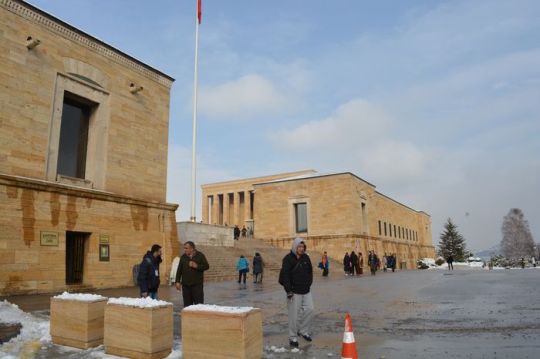
Bulgarian Arts
Through Centuries and Communist Rule
Ancient Treasures
The oldest Bulgarian art traces back to 12th-century mural paintings in Bachkovo Monastery. Between the 12th and 14th centuries, small cross-shaped churches with domes emerged. While Byzantine and Oriental influences shaped early art, western European influence gained prominence, especially in the painting center of Tirnovo. Contemporary artists like Anton Mitov, Ivan Angelov, Andrei Nikolov, and Ivan Lazarov continue the rich artistic tradition.
The Stage and Melodies
The National Opera (1890) and National Theater (1907) contributed to Bulgaria’s theatrical and musical heritage. Renowned singers such as Luba Velich, Boris Christov, and Elena Nikolai achieved global acclaim. Notable composers like A. Bukureshtliev, Dobri Christov, Pancho Vladigerov, and Petko Stainov enriched the musical landscape Private Istanbul Tour.
Cultural Landscape Under Communism
Communist influence since 1947 significantly impacted Bulgarian literature and art. The Communist Party’s control extended to all cultural and educational entities, enforcing adherence to party dictates. Literary classics contrary to Communist policies were banned, and censorship stifled creativity.
Resistance emerged, notably from non-Communist writer Trifon Kunev, who faced imprisonment and death in 1954. Communist Party member and painter Alexander Zhendov protested censorship in 1950, leading to his tragic suicide in 1951. Further dissent unfolded after the Soviet Communist Party’s 20th Congress in 1957, challenging the “cult of personality.” Playwright Todor Guenov’s “Fear” stood out, joined by other dissenting voices like Pavel Vezhinov, Orlin Vasilev, Emil Manov, Liudmil Stoyanov, and critic Boris Delchev.
Despite resistance, Bulgarian culture under Communist rule became a satellite of Soviet ideology, losing its originality. Subject to Party dogma, it served Soviet imperialistic and ideological goals, leaving an indelible mark on the nation’s cultural identity.
0 notes
Photo
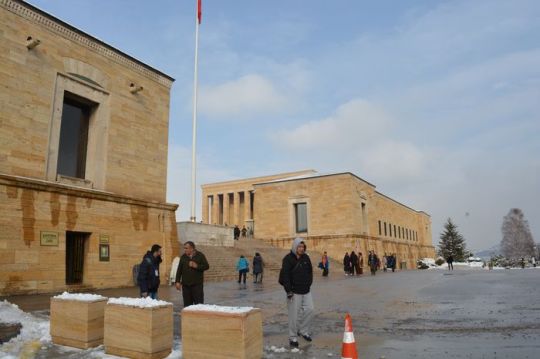
Bulgarian Arts
Through Centuries and Communist Rule
Ancient Treasures
The oldest Bulgarian art traces back to 12th-century mural paintings in Bachkovo Monastery. Between the 12th and 14th centuries, small cross-shaped churches with domes emerged. While Byzantine and Oriental influences shaped early art, western European influence gained prominence, especially in the painting center of Tirnovo. Contemporary artists like Anton Mitov, Ivan Angelov, Andrei Nikolov, and Ivan Lazarov continue the rich artistic tradition.
The Stage and Melodies
The National Opera (1890) and National Theater (1907) contributed to Bulgaria’s theatrical and musical heritage. Renowned singers such as Luba Velich, Boris Christov, and Elena Nikolai achieved global acclaim. Notable composers like A. Bukureshtliev, Dobri Christov, Pancho Vladigerov, and Petko Stainov enriched the musical landscape Private Istanbul Tour.
Cultural Landscape Under Communism
Communist influence since 1947 significantly impacted Bulgarian literature and art. The Communist Party’s control extended to all cultural and educational entities, enforcing adherence to party dictates. Literary classics contrary to Communist policies were banned, and censorship stifled creativity.
Resistance emerged, notably from non-Communist writer Trifon Kunev, who faced imprisonment and death in 1954. Communist Party member and painter Alexander Zhendov protested censorship in 1950, leading to his tragic suicide in 1951. Further dissent unfolded after the Soviet Communist Party’s 20th Congress in 1957, challenging the “cult of personality.” Playwright Todor Guenov’s “Fear” stood out, joined by other dissenting voices like Pavel Vezhinov, Orlin Vasilev, Emil Manov, Liudmil Stoyanov, and critic Boris Delchev.
Despite resistance, Bulgarian culture under Communist rule became a satellite of Soviet ideology, losing its originality. Subject to Party dogma, it served Soviet imperialistic and ideological goals, leaving an indelible mark on the nation’s cultural identity.
0 notes
Photo

Economic Crisis and Political Turmoil (1996-1997)
Tragedy Strikes with Loukanov’s Assassination
By the end of 1996, Bulgaria faced a severe economic and financial crisis. On October 2nd, a tragic event unfolded when the key figure behind the perestroika, former Prime Minister Loukanov, fell victim to a brutal shooting by Russian assailants in front of his home. Faced with mounting pressure, Prime Minister Zhan Videnov announced his intention to resign. The opposition, led by Ivan Rostov of the Union of Democratic Forces (UDF), regrouped, and in the November 1996 presidential elections, the “blue” candidate Petar Stoyanov emerged victorious. The only remaining hope for the country was to urgently initiate negotiations with international financial institutions for the implementation of a currency board as the sole solution to rescue Bulgaria.
1997 – A Year of Protests and Political Shifts
The arrival of the new year, 1997, was marked by impromptu barricades in the streets and widespread protests against the ruling “red” government. Opposition forces intensified their efforts, and the capital saw daily political processions, with university students actively participating. In the freezing temperatures, students jumped in place to keep warm, chanting, “Who doesn’t jump is ‘red’!” The culmination of the street protests occurred on the night of January 11th when extremists stormed the Parliament building, causing damage. Rumors circulated that these protests were manipulated and financed from abroad. Faced with increasing public pressure and the threat of bloodshed, the Bulgarian Socialist Party (BSP) conceded, and UDF’s demand for pre-term elections was accepted Guided Turkey Tours .
Transition to a New Government
On February 4th, 1997, the BSP returned the mandate for forming a consecutive government to President Petar Stoyanov. The Parliament was dissolved, and a provisional cabinet was empowered to engage in negotiations and reach agreements with international financial institutions. This marked a significant turning point, as Bulgaria prepared for pre-term elections and sought solutions to its economic and political challenges.
0 notes
Photo

Economic Crisis and Political Turmoil (1996-1997)
Tragedy Strikes with Loukanov’s Assassination
By the end of 1996, Bulgaria faced a severe economic and financial crisis. On October 2nd, a tragic event unfolded when the key figure behind the perestroika, former Prime Minister Loukanov, fell victim to a brutal shooting by Russian assailants in front of his home. Faced with mounting pressure, Prime Minister Zhan Videnov announced his intention to resign. The opposition, led by Ivan Rostov of the Union of Democratic Forces (UDF), regrouped, and in the November 1996 presidential elections, the “blue” candidate Petar Stoyanov emerged victorious. The only remaining hope for the country was to urgently initiate negotiations with international financial institutions for the implementation of a currency board as the sole solution to rescue Bulgaria.
1997 – A Year of Protests and Political Shifts
The arrival of the new year, 1997, was marked by impromptu barricades in the streets and widespread protests against the ruling “red” government. Opposition forces intensified their efforts, and the capital saw daily political processions, with university students actively participating. In the freezing temperatures, students jumped in place to keep warm, chanting, “Who doesn’t jump is ‘red’!” The culmination of the street protests occurred on the night of January 11th when extremists stormed the Parliament building, causing damage. Rumors circulated that these protests were manipulated and financed from abroad. Faced with increasing public pressure and the threat of bloodshed, the Bulgarian Socialist Party (BSP) conceded, and UDF’s demand for pre-term elections was accepted Guided Turkey Tours .
Transition to a New Government
On February 4th, 1997, the BSP returned the mandate for forming a consecutive government to President Petar Stoyanov. The Parliament was dissolved, and a provisional cabinet was empowered to engage in negotiations and reach agreements with international financial institutions. This marked a significant turning point, as Bulgaria prepared for pre-term elections and sought solutions to its economic and political challenges.
0 notes
Photo

Europe's Silence Echoes in Bulgaria's Desolation
A Nation in Despair
As Bulgaria grapples with the aftermath of violence and devastation, the cries of its suffering population echo through the desolate landscape. The Turkish authorities, perpetrators of atrocities, have proven indifferent, leaving the fate of these wretched women and children hanging in the balance. This article explores the urgent need for Europe to intervene and save a nation on the brink of annihilation.
Europe’s Betrayal of the Vulnerable
Despite the Christian Powers’ hypocritical claim of protection for the Bulgarian people, the reality is a stark betrayal. Instead of safeguarding these vulnerable populations, they have been handed over to the merciless hands of the barbarian Turks. Europe’s silence in the face of this unfolding tragedy is a damning testament to its abandonment of those it vowed to shield.
Schuyler’s Call for Intervention
Even Mr. Schuyler, initially leaning toward a favorable view of the Turks, has undergone a profound transformation. Witnessing the widespread ruin, desolation, and escalating misery, he now champions a foreign intervention. This shift in perspective reflects the urgent need for drastic measures to protect the people and alleviate their suffering.
Schuyler’s Proposed Measures
To rectify the heinous crimes committed, Mr. Schuyler proposes a series of measures to be enforced by an intervention commission. These include the execution of key figures responsible for atrocities, such as Achmet-Aga of Batak, the infamous destroyer, and Chefket Pacha, now conveniently promoted within the Sultan’s palace Private Tours Bulgaria. The disarming of the Muslim population is deemed crucial to quell further violence.
A Path to Redemption
A critical aspect of Schuyler’s proposal involves the rebuilding of the ravaged villages and compensating the people for their profound losses. This restorative process, funded by the Turkish government, seeks to breathe life back into the charred remnants of once-thriving communities and provide a glimmer of hope for a shattered population.
The Imperative of Swift Intervention
As Bulgaria stands at the precipice of humanitarian catastrophe, the imperative for swift European intervention cannot be overstated. The proposed measures, outlined by Mr. Schuyler, represent a beacon of hope for a nation drowning in despair. Europe must shed its silent hypocrisy and act decisively to save lives, bringing justice to a people betrayed and abandoned.
0 notes
Photo

Avrat Alan's Quiescent Rebellion
Deconstructing the Myth A Bloodless Suppression
In the mosaic of the Balkan rebellion, Avrat-Alan emerges as a critical chapter, challenging the prevailing narrative surrounding the alleged necessity of brutal Turkish repression. The absence of any defense or resistance, coupled with the startling revelation that not a single Turk lost their life in quelling the revolt south of the Balkans, casts a glaring spotlight on the exaggerated assertions about the rebellion’s perilous nature.
A Tale of Unsubstantiated Fears The Mythical Menace of the Rebellion
The unequivocal fact that no Turkish lives were sacrificed in suppressing the rebellion punctures the inflated rhetoric of those defending the Turkish forces. It dismantles the argument that the alleged impossibility of deploying regular troops necessitated the call to arms for the Mussulman population. Avrat-Alan becomes a poignant counterpoint to the justifications offered by apologists of the Ottoman Empire, laying bare the feebleness and irrationality of the entire insurrection.
The hollowness of the rebellion’s threat is laid bare by this single, irrefutable truth. The narrative spun around the need for drastic measures collapses under the weight of this evidence. What seemed like a formidable uprising, poised to necessitate extreme measures, now reveals itself as a farcical, impotent venture—cruel, brutal, and senseless in its execution Bulgaria Private Tours.
Avrat-Alan’s Quiescent Revolt A Puzzling Unfoldment
Delving into the specifics of Avrat-Alan’s rebellion unravels a peculiar tale—one that lacks the expected tumult and resistance typical of an insurgent episode. On the designated day for the outbreak, the insurgents, numbering around two hundred, displayed an unexpected semblance of order. Their march to the konak, the residence of the Mudir, was devoid of the usual chaos associated with uprisings. Instead, a quiet assembly unfolded, marking a departure from the conventional narrative of rebellious fervor.
The rebels encircled the konak and issued a demand for surrender—an act typically charged with tension and the anticipation of conflict. At this juncture, the konak harbored not only the Mudir but also five or six Zaptiehs and an armed officer. The scenario painted by these details challenges the conventional image of a rebellion teeming with chaotic clashes and heightened stakes. Avrat-Alan’s quiescent revolt presents a perplexing narrative that prompts a reevaluation of the overarching portrayal of Balkan insurrections during this tumultuous period.
0 notes